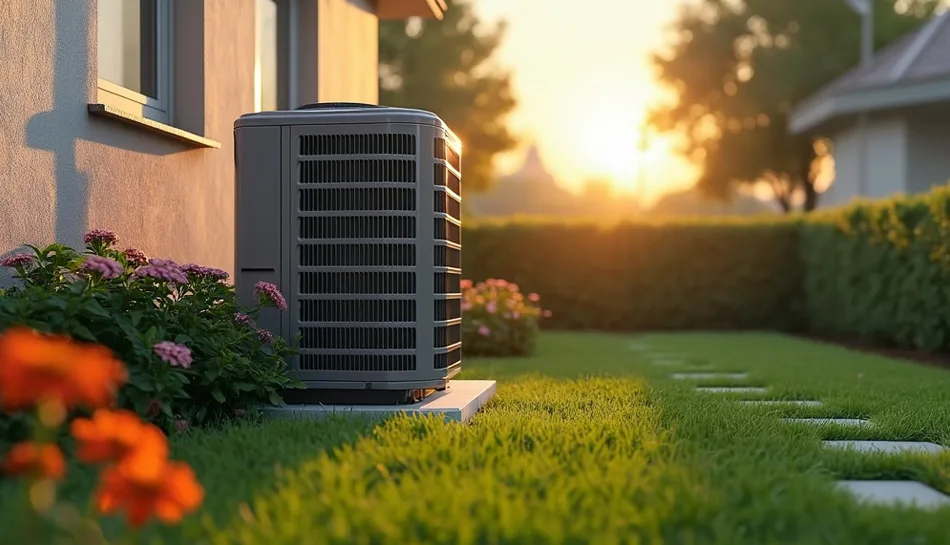In the fight against global warming and the ever-growing demand for more energy supplies, geothermal heat pumps are gaining popularity. This article will delve in detail into what they are, how they work, and the role they are going to play in the future energy system.
A geothermal heat pump is a system that uses a constant temperature underground to provide heating and cooling. It consists of three main components: ground loop system, heat pump unit, and indoor distribution system.
So how does a geothermal heat pump work? Its basic working principle is to use the stable temperature of the ground for efficient heat exchange, which can be divided into two main processes: winter heating and summer cooling.
In winter, the fluid in the ground loop (usually water or antifreeze) circulates in underground pipes. The fluid absorbs heat from the ground and transfers it to the heat pump unit, which extracts the heat from the ground loop through its compressor and heat exchanger, and then transfers it to the interior of the building to achieve heating.
In summer, the system operates differently. At this time, the heat pump unit extracts heat from the inside of the building, and uses the ground loop to transfer this heat to the ground and cool it. Finally, the cooled fluid is returned to the interior of the building to achieve cooling.
Whether it is winter or summer, the indoor distribution system is responsible for evenly distributing heat and cold to each room. In this way, the whole house is comfortable in different seasons. It also saves energy and is environmentally friendly because it uses underground constant temperature.

Ground source heat pump technology is in continuous development and has a bright future. With the progress of technology, the growth of market demand, and the popularity of geothermal heat pumps around the world, geothermal heat pumps are expected to play an increasingly important role in the energy field.
Technological Advancements
With the progress of continuous technology in the future, the efficiency of the heat pump will be further improved, while the cost is reduced correspondingly. In the installation of a heat pump, innovations in drilling technologies have greatly advanced the installation process of the geothermal systems. This not only speeds up the installing speed but also reduces the cost of construction.
In addition, advances in geothermal technology include hybrid systems that combine geothermal with other renewable energy sources, such as solar or wind. These systems take advantage of the complementary advantages of geothermal and other energy sources, further improving overall efficiency and system economics. With the development of these technologies, geothermal heat pumps are expected to become more efficient and economical in the future.
Market Growth and Demand
being energy-efficient and environmentally friendly heat pumps, will be in greater demand and their market will increase considerably. This growth in demand is also able to drive further development of technology, continuously improving energy efficiency and reducing costs for consumers.
Governments and agencies have also increased policy support for renewable energy, including tax breaks, subsidies, and incentives aimed at encouraging the adoption of environmentally friendly technologies. Policy support not only makes geothermal systems more accessible, but can also further reduce the upfront investment costs of the system.
Geothermal heat pumps have significant potential as an efficient and environmentally friendly energy solution.
Calculating Return on Investment (ROI)
To determine whether a geothermal heat pump is worth investing in, look at its return on investment (ROI). How to calculate ROI? Calculating ROI requires comparing the initial investment cost with the long-term savings on energy bills and maintenance costs, and then calculating the ratio of net annual benefits to the initial investment. The higher the ROI, the more worthwhile the investment.
Even though the initial costs of the equipment, installation, design, and engineering of geothermal heat pumps are high, operating costs remain low. Generally speaking, the payback period for geothermal heat pump systems usually ranges between 5 to 10 years, depending on the efficiency of the system, climate conditions, and other factors.
Environmental Considerations
Apart from the economic reasons, there are also several environmental benefits to consider as a factor in deciding whether to invest in geothermal heat pumps. Geothermal systems are environmentally friendly. Compared with traditional energy systems that rely on fossil fuels, geothermal heat pumps emit almost no greenhouse gases, reducing dependence on fossil fuels. The use of geothermal heat pump systems contributes to sustainability.
Benefits to the environment are something that many consumers also consider. Purchasing a geothermal heat pump system conforms with environmental protection regulations in addition to offering long-term financial advantages. Because of these two benefits, investing in geothermal heat pumps is worthwhile.
Geothermal heat pumps have a great potential for future development in efficiently achieving heating and cooling. While the initial investment may be high, in the long term, both energy and environmental benefits make it an investment worth considering. Along with continuous technological progress, in the future, geothermal heat pumps will occupy an important position.